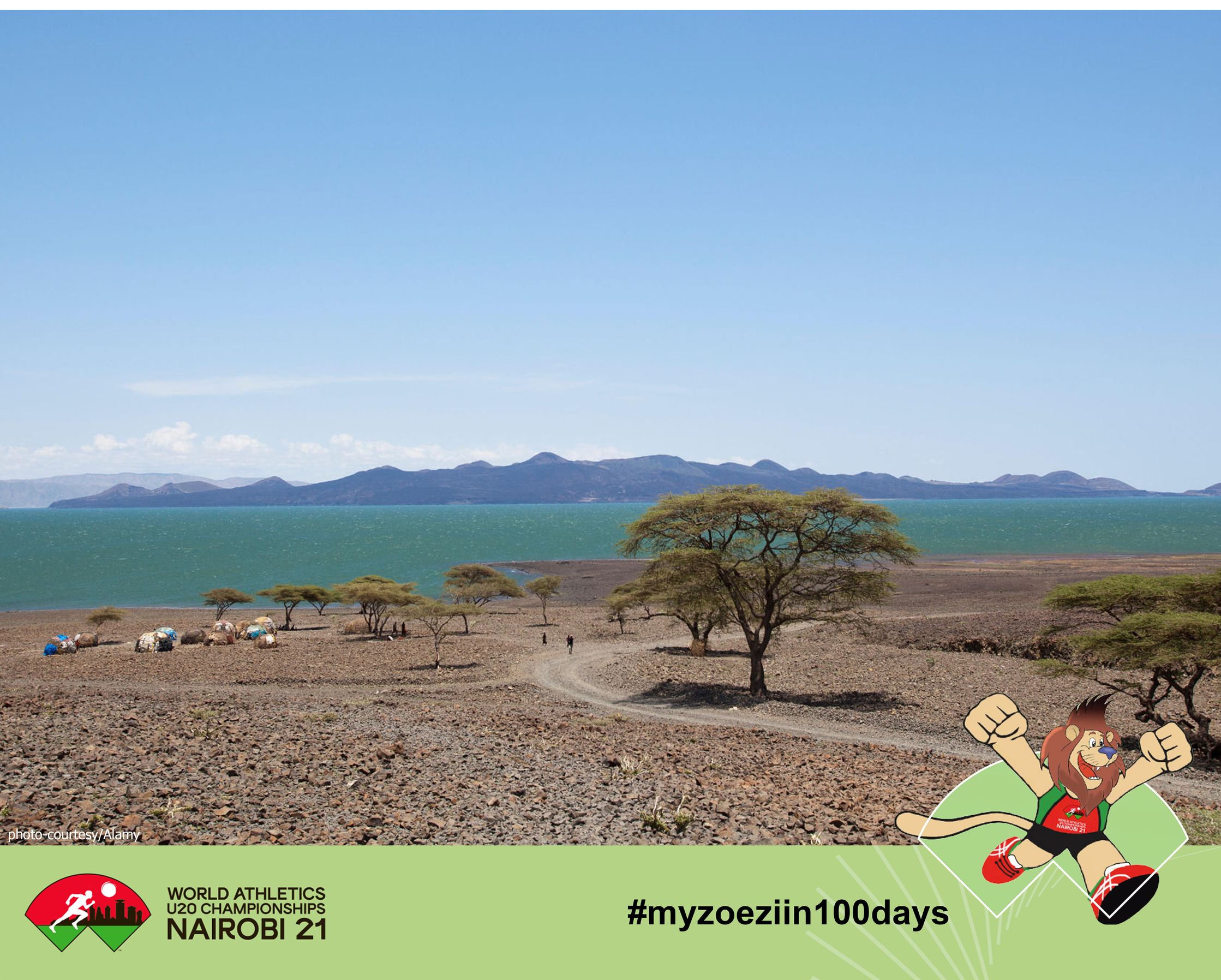20 DAYS TO GO

Lake Turkana, previously Lake Rudolf, is a lake in northern Kenya's Kenyan Rift Valley, with its extreme northern end bordering Ethiopia. It is the world's largest alkaline lake and the world's largest permanent desert lake. After the Caspian Sea, Issyk-Kul, and Lake Van, it is the world's fourth-biggest salt lake by volume, and the 24th largest lake overall. Due to the damming of the Omo river, which supplies the majority of the lake's water, the construction of the Gilgel Gibe III Dam in Ethiopia has put Lake Turkana in jeopardy. Although the lake has been used for drinking water in the past, its salinity and extremely high fluoride levels make it unfit for consumption, and it has also been a source of diseases transferred by polluted water. Communities along the lake's shoreline are increasingly relying on subsurface springs for drinking water. Its utility in irrigation is limited by the same features that make it unfit for drinking. The climate is extremely hot and dry. The majority of the rocks in the surrounding area are volcanic. Central Island is a raging volcano that spews lava.
On the east and south banks of the lake, outcrops and rocky shoreline may be seen, while dunes, spits, and flats can be found on the west and north shores, which are lower in elevation. Because the lake warms and cools more slowly than the land, on-shore and off-shore winds can be exceptionally strong. Storms that come on suddenly and violently are common. The lake receives water from three rivers (Omo, Turkwel, and Kerio), but due to a lack of outlet, the only way it loses water is by evaporation. Between 1975 and 1993, the lake's capacity and size changed by ten meters. Despite the lack of outflow, it is frequently considered a part of the Nile basin in ecology due to its prehistoric link and parallels in aquatic faunas. The lake keeps its wild nature due to temperature (its surface water is typically 27–31 °C [81–88 °F], while the region's mean air temperature is similar or slightly higher), aridity, and geographic inaccessibility. On the flats, Nile crocodiles can be found in large numbers. Scorpions and carpet vipers live on the rocky coastlines. The lake is rich in fish and fishing is very important to the local economy, but this is threatened by falling water levels and overfishing.

The modest and exclusive Samatian is located on a private island in Kenya's Great Rift Valley's Lake Baringo. The island provides the ideal hideaway with its breathtaking views across the lake to the majestic background of the Laikipia Escarpment. The beauty of Baringo is legendary, with its breathtaking sunsets, brilliant diversity of bird life, and traditional lifestyle of the Njemps fisherman. Lake Baringo is also a Ramsar site, having been designated as a critically important wetland on a global scale. The utmost in leisure in a magnificent setting awaits tourists on Samatian Island.



